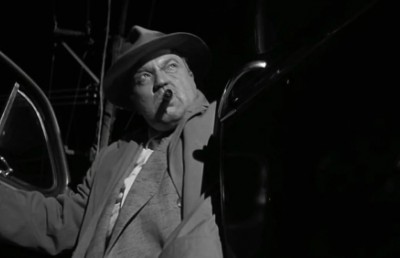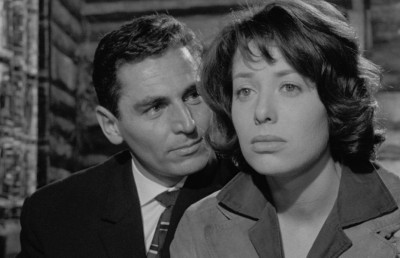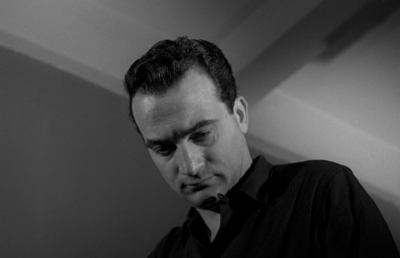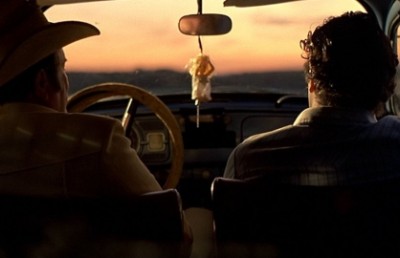Sex & Pen: the representation of writers in Sunset Boulevard and In a Lonely Place
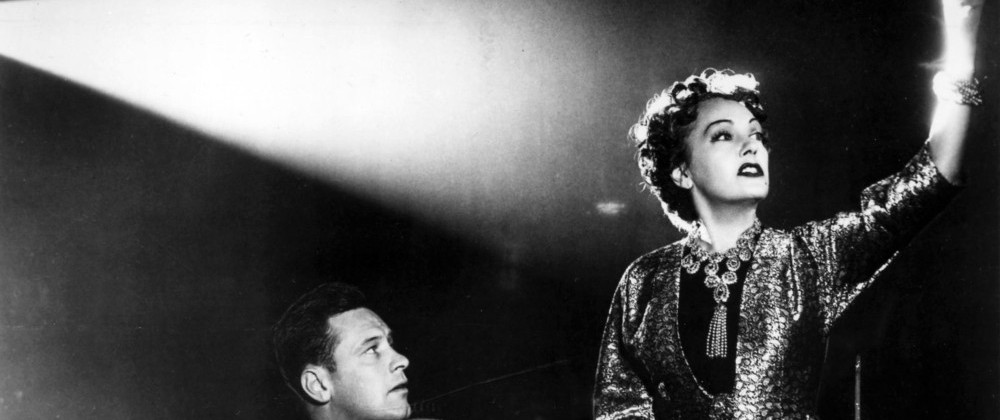
“With Sunset Boulevard (1950), the movies recognize themselves as history. But while the silent era, as James Agee would write in Sight and Sound, is ‘granted a kind of barbarous grandeur and intensity,’ present-day Hollywood is a ruin.”
— J. Hoberman, An Army of Phantoms 1
“For an example of how the liberals allowed their political concerns to get through in disguised fashion, consider In a Lonely Place (1950), starring Bogart as Dixon Steele, an alienated scriptwriter who has been blacklisted by the studios, not because of his politics but because of his drinking and brawling. The film makes Steele’s problems seem existential and cultural: he is a hard-boiled literary type who is beset by what François Truffaut called ‘an inner demon of violence’ and who despises the trashy taste of Hollywood producers.”
— James Naremore, More Than Night 2
It has been said that the pen is mightier than the sword, but what happens when the pen comes up against the axe? When one looks back upon the Golden Age of Hollywood there are plenty of areas where spots of tarnish have left their mark on the shimmering surface. This particular era, which produced some exceptionally memorable films, was also fraught with legal struggles and internal strife. By examining narrative elements common to both Sunset Boulevard (1950) and In a Lonely Place (1950) we can observe how some of these issues are lurking in the shadows that fill the dark corners of these two films.
James Naremore asserts that it has been difficult to assess with any precision the scale of the impact made by the House Un-American Activities Committee. It is difficult to say, with any certainty, exactly how the immense weight of proceedings affected the individuals who were placed under duress. He relates the conclusions made by Thom Andersen and explains that the body of work created by a number of the blacklisted, and graylisted, artists with left-leaning politics forms a distinct humanist subgenre of film noir which can be viewed as a response to the constant “threat of political repression.” 3
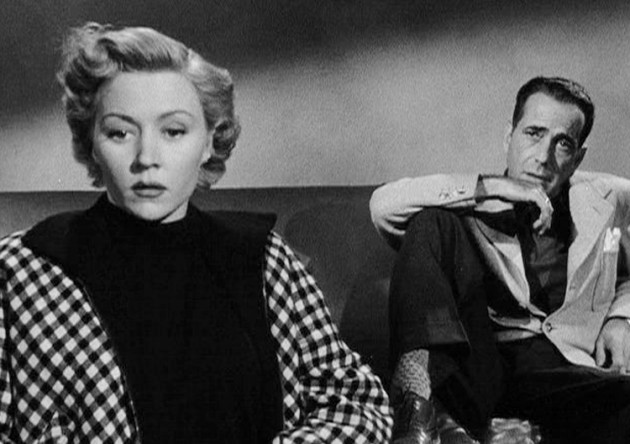
This leftist subset of film noir, which he and Andersen both hesitate to refer to as film gris, is one that tended to be more politically engaged. These films didn’t elicit the same bleak sense of pessimism driven by the notion that even good people were capable of terrible things when they were dealt the wrong hand.
Nicholas Ray’s film In a Lonely Place, with its nuanced depiction of a frustrated screenwriter who is a grizzled veteran of both the industry and the Second World War, certainly has a tragic element to its narrative arc, but also strives to paint a detailed portrait of a troubled soul. There is a lot of darkness in the tale, but there is also a sense of compassion for a man who is doing his utmost to hold onto something that has already slipped through his fingers.
Billy Wilder, on the other hand, is one of the directors that Naremore cites as being part of the noir movement that tended toward ‘cynicism and misanthropy’. 4 Sunset Boulevard certainly shows a lot of people doing a lot of terrible things, and it is still shocking to see just how dark the film gets with its depiction of Hollywood’s ruthless inner workings. Reaction to Sunset Boulevard within the industry became the stuff of legend, 5 and it is worth noting that the film’s protagonist, Joe Gillis (William Holden), who is found floating face down in a swimming pool during the film’s opening, shares the same occupation as Dixon Steele (Humphrey Bogart) of In a Lonely Place. They are both unemployed screenwriters, but it is only Gillis who presents viewers with the chain of events leading up to his own untimely demise.
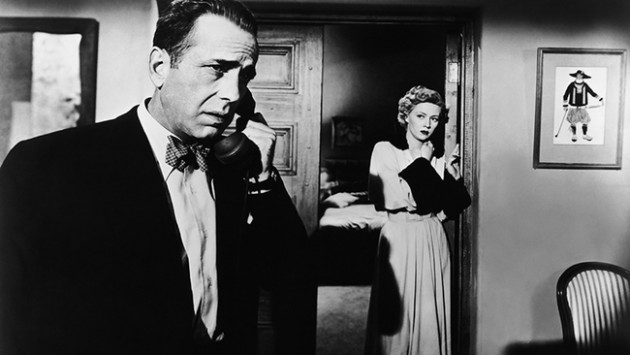
The issues confronting writers had long been a concern for Charles Brackett, one of Wilder’s collaborators on the screenplay. Brackett had been President of the Screenwriter’s Guild during that organization’s fight to become the exclusive bargaining agency in Hollywood. For much of his tenure he dealt with studios that were reluctant to negotiate with the union. Some of these studios resorted to blacklisting members of the Screenwriter’s Guild, which led to a lengthy legal battle. Nancy Lynn Schwartz described Brackett as “a professional writer, whose primary concern was that of dignifying his profession.” 6
It may be that, during a period where a new blacklisting was ongoing, a script dealing with the plight of a desperately unemployed screenwriter presented an ideal opportunity to pull back the curtain and expose the sordid reality that Hollywood scribes were increasingly exposed to in a hostile environment where they were beset by accusations flying from all sides.
Victor S. Navasky indicates that “the collective process of moviemaking precluded the screenwriter, low man on the creative totem pole, from influencing the content of movies,” 7 an observation that clearly signals that the studios had structures in place to limit the input of writers. This, however, did not prevent some, like Sunset Boulevard’s character of Norma Desmond (Gloria Swanson), from having the opinion that screenwriters held too much sway. In their eyes, writers were an invasive injection of liberal corruption into a closed system. People holding this viewpoint saw screenwriters, particularly the more radical and politically active ones, as being directly implicated in the downfall of the motion picture industry. Desmond’s explosive tirade leaves no doubts about how she feels about scriptwriters: “Writing words, words, more words! Well, you’ll make a rope of words and strangle this business! With a microphone there to catch the last gurgles, and Technicolor to photograph the red, swollen tongues!”
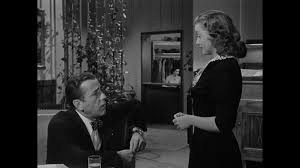
Public paranoia regarding the fears of a Communist menace within the film industry and the imposing spectre of the blacklist weren’t the only issues confronting writers at this time. They also had to contend with a shift away from the guaranteed income of working under contract toward a system that favoured freelance work where scripts were sold on spec. This posed significant problems in an industry where “the screenwriter’s job, prestige and salary are functions of his list of credits, especially his last one.” 8 There was little margin for error in a climate where a writer could potentially be rendered unemployable if a good script resulted in a lousy picture that brought back poor returns at the box office.
Even those writers who weren’t on the blacklist faced the problems posed by “the institution of the black market for blacklisted writers. For a reduced price, often as little as ten per cent of the pre-blacklist rate, a producer could obtain the work of a blacklisted writer through the use of a pseudonym or by the use of the name of a non-blacklisted writer who often took a sizeable cut himself.” 9
In other words, freelance writers had to contend with the financial pressure of being in competition with an illicit trade in scripts penned by banished wordsmiths, as well as the ethical dilemma offered up by the possibility of being paid to take credit for someone else’s work.
In her analysis of issues facing the film industry during the post-war era, Janet Staiger observes that “between June 1945 and August 1948 the number of writers on term contracts fell from 189 to 87” 10 These are not the kind of numbers that one expects to see in a gradual shift away from an established way of doing business. This sort of drastic decline indicates that Hollywood was scrambling to adjust to changes in the industry brought on by a number of factors. These include the precipitous drop in movie-going attendance in the post-war period, the unstable climate related to the Paramount decision, and growing competition with a burgeoning television market. The HUAC trials arrived during a period of heightened uncertainty. Nancy Lynn Schwartz describes it as follows:
In an industry that was starting to lose its power as television took hold, an industry that had just come out of its most serious and violent labor disputes, perhaps there was a need to pin the woes on the communists. The tension and resentment had been there for a long time. It only took the appropriate climate and the appropriate spark to set the whole house on fire.” 11
It is the chaos of this fiery environment which forged the two films at the heart of this particular discussion. The director of the first of these, In a Lonely Place, is Nicholas Ray; a former associate of Elia Kazan and a name that is conspicuously absent from most literature regarding the blacklist. [[Neve, Brian. “HUAC, the Blacklist, and the Decline of Social Cinema.” in Transforming the Screen, 1950-1959. Peter Lev, ed. New York, NY : Charles Scribner’s Sons, 2003. Gale Virtual reference Library. Web. 12 Oct 2013. “Nicholas Ray avoided the blacklist, but his work in the late forties, including They Live By Night (1949) and Knock on Any Door
(1949), dealt with the problems of youth in a way that clearly relates, in retrospect, to Andersen’s notion of work and the ‘psychological injuries of class.’ Ray also worked in part in Europe in the fifties, and was reportedly on a graylist for a time, while arguably making metaphoric reference to the blacklist in In a Lonely Place (1950) and Johnny Guitar (1954). “ p. 74.
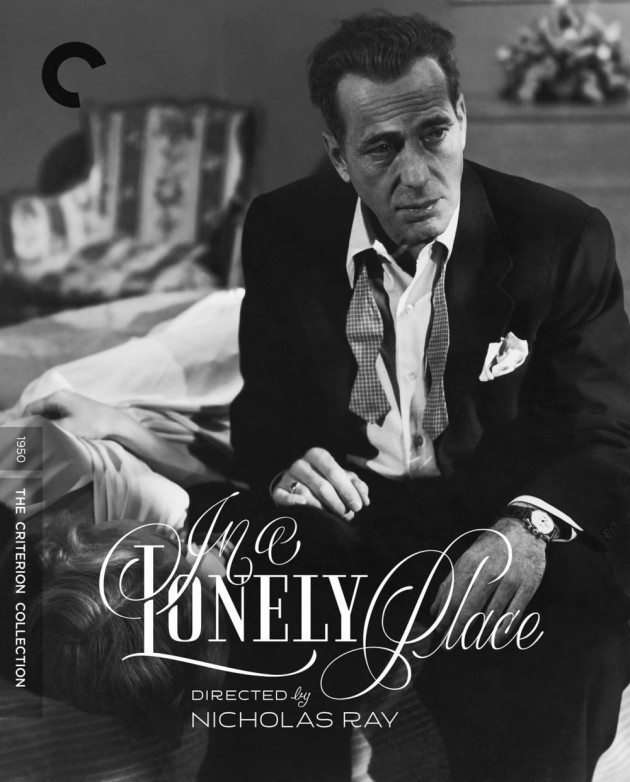
Hoberman insists that this was due to the influence of Howard Hughes, who was looking out for the young director and used his considerable political weight to call off the authorities. 12 Despite being concerned enough to shelter Ray from investigation by the authorities, Hughes doesn’t seem to have had projects at RKO that were suitable for the young man’s talents. For this reason Ray was occasionally loaned out to other studios, like Columbia — where he came to make In a Lonely Place under Bogart’s own Santana Pictures banner.
Ray and Bogart had previously worked together on Knock On Any Door (1949), and it’s interesting that this second project would go to such lengths to permit such an unflattering glimpse at the dark side of Bogart’s character. Steve Cohan argues that the film is a rejection of Bogart’s prior history as a tough guy 13 an idea that echoes the more general thoughts of Warren Sussman regarding the changing attitude to violence in the postwar era. Sussman writes that “in the 1950s Americans discovered violence. Of course, we have always been an aggressive people and have always talked about violence, but not until the 1950s did readers begin to see thousands of articles analyzing it as a fundamental character defect in American life.” 14
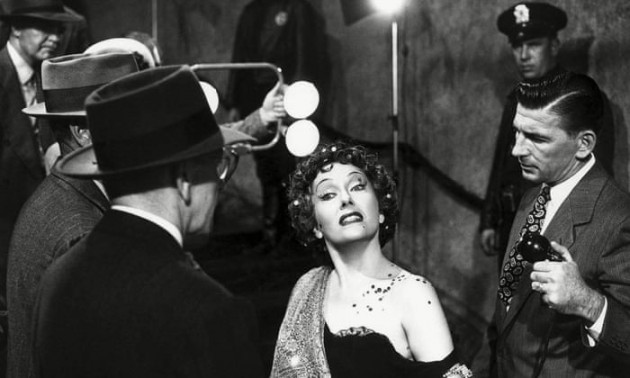
Hoberman differs somewhat in his stance, and suggests that the role may have been part of an attempt by Bogart to outrun the public embarrassment 15 and personal anger 16 related to his involvement with the Committee for the First Amendment. Bogart had been one of the stars that had made the trip to Washington in support of the Hollywood Nineteen, but would later claim that he’d been tricked into supporting the Communist cause. 17 In any case, while the blacklist is never explicitly referenced within the story, it has been suggested that its ominous shadow looms over the text of the film, as well as certain others made during the same period. It certainly seems plausible that, as James Naremore claims, “the despairing tone of The Prowler, Try and Get Me, Force of Evil, Gun Crazy, All the King’s Men, and In a Lonely Place is clearly related to the politics and historical circumstances of individual writers, directors, and stars.” 18
The narrative of In a Lonely Place follows the path of Dixon Steele, a once successful screenwriter who is reduced to working on an adaptation of a trashy, but popular, novel in order to get any work. He is crass, contemptuous, resentful, and he doesn’t bother to restrain himself when it comes to releasing his frustrations through violent outbursts. Sometimes he may feel that the situation only really warrants a vicious tongue-lashing, but he’s not averse to physical aggression when he deems it necessary. This is not to say that Dixon is a misanthropist, because he certainly does have moments where he exhibits tenderness and respect, and not just with Laurel (Gloria Grahame), the object of his affection. In fact, the first instance where we witness the abrupt emergence of his violent temper is when he takes offence to the way that Junior (Lewis Howard), the cigar chomping son of a studio executive, ashes into the drink of Charlie Waterman (Robert Warwick).
Junior’s utter disregard for Charlie, a faded silent movie star who has fallen on hard times, is only marginally more disrespectful than the derogatory comments directed toward Dixon by the pair he is doing business with; the director that derides him for not writing anything worth reading since before the war, and the agent who tries to convince him that the only way back into the system is to accept a job adapting a trashy book entitled Althea Bruce for the screen. It is during a pointed exchange of verbal barbs that Junior arrives on the scene and begins to boast to one and nearly all about the guaranteed success of his latest picture. Junior is so blinded by the bottom line, and so absolutely void of artistic ideas, that his claims are not based on the quality of the film he has just screened, but on the observation that no one walked out. During his address, which is directed at the entirety of the bar, he keeps his back turned to Charlie. The old man desperately vies for attention, but is shunned as if his slide into obscurity might be contagious.
Dixon’s violent reaction to this affront does more than just simply establish the character as a man of both principles and action, it also points toward the desperation of his own situation. He may treat this group of industry insiders gathered at the bar with some degree of contempt, but he is aware that his own situation is not that far removed from Charlie’s. He may still be working, but he is nearly on equal footing with the old man, and without a rapid change in fortunes Dixon might find himself in similar straits. The entirety of the scene paints a portrait of a sensitive, but volatile, artist who is reluctant to compromise and unable to prevent his temper from taking control of him. He may have his price, he does eventually accept the offer to adapt the novel he is so loath to read, but by acquiescing to the demand during a private conversation with his agent he manages to hold on to some vestige of his pride.
This stands in stark contrast to Joe Gillis in Sunset Boulevard. He is also a writer without a contract, but he is so perilously close to hitting rock bottom that he no longer has any scruples whatsoever about accepting payments from Norma Desmond in exchange for working on material that is painfully far from meeting any standard of quality. The film may be cynical about the way that Hollywood can sometimes treat its own, but it is that special misanthropic cynicism that never tries too hard to convince the audience that characters like Gillis or Desmond deserve any better than they receive. Charles Brackett, Sunset Boulevard’s co-writer, may have had a long-time concern for the rights of screenwriters, but Wilder, who once opined that “of the Unfriendly Ten only two had any talent, the other eight were just unfriendly,” 19 might be responsible for introducing a distinctly darker tone to a project that had “initially been conceived as a grotesque comedy about a silent film star who attempts to revive her career.” 20
Throughout the narrative of Sunset Boulevard Joe Gillis is desperately clinging to the idea that he can somehow make his way back on to the studio payroll, while Desmond is completely delusional in the idea that a return to her days as a movie star is just around the corner. There is no project that could conceivably rescue her from the isolation of her decaying mansion. The movie industry has dumped her at the side of the road and continued on its journey, leaving her to disappear out of sight; lost in a cloud of dust that lingers in the cultural rear-view mirror. Her status as a star exists only in her own memories, and when she proclaims “I am big. It’s the pictures that got small,“ it’s because she’s watched them take off into the sunset. She sits at the roadside watching them shrink away into the distance, dreaming they will finally realize she’s gone missing and suddenly feel the need to come back and retrieve her because the pictures simply aren’t the same without her close-up.
In the cynical world of Sunset Boulevard everyone is expendable. If you are past your prime, you are dead weight. Hollywood never really had any use for excess baggage. In an era of austerity it could neither afford the presence of those who refused to play by the rules that the studios set, nor the ones who weren’t entirely able to generate enough income to warrant their continued passage on the gravy train. Show business has a reputation for being ruthless at the best of times, and in times of strife it sought to defend itself by becoming particularly cutthroat. Writing specifically about the way HUAC destabilized the delicate balance of the entertainment ecosystem Navasky tells us that:
bq. For Hollywood, with all its contradictions, was not merely the compliant company town, willing to endure a little repression in exchange for the cash and profit to which its inhabitants had grown accustomed. Hollywood was a company town, but a fragile one, which had earned its coherence by holding violently contradictory tendencies in balance: culture vs. commerce, message vs. entertainment, formula vs. originality. HUAC helped to shatter this fragile network of delicate balances, but Hollywood was an active contributor to its own predicament. 21
Navasky may have been referring to just one of the factors that had pushed the industry into a shifting landscape of changes, where sure footing was out of reach for many, but In a Lonely Place primarily highlights the expendable nature of the screenwriter. Charlie Waterman aside, the film’s focus is firmly placed on the struggles facing the character of Dixon Steele. Unlike the conniving Joe Gillis, who takes full advantage of the narcissistic delusions of an affluent former star, Steele tries his utmost to let his moral compass guide him through the unwelcoming territory of postwar Hollywood. He may be the sort of guy to knock back drinks in the bar, and knock down those who don’t agree with him, but he’s also a stand up guy.
Louis Brooks, who makes her own claims about being blacklisted during another tumultuous time in Hollywood history, the transition from silent to talking pictures, 22 identifies the personal side of the Dixon Steele role. Having known Bogart since his days on Broadway in the 1920s, she devotes a chapter of her book Lulu in Hollywood to separating the man she had known from the myth he would eventually become. She indicates that in the last decade of his life the embers of a talent ravaged by his lifestyle were allowed to glow for one last flickering instant.
However, before inertia set in, he played one fascinatingly complex character, craftily directed by Nicholas Ray, in a film whose title perfectly defined Bogart’s own isolation among people. That film was In a Lonely Place. It gave him a role that he could play with complexity, because the film character’s pride in his art, his selfishness, his drunkenness, his lack of energy stabbed with lightning strokes of violence were shared by the real Bogart.” 23
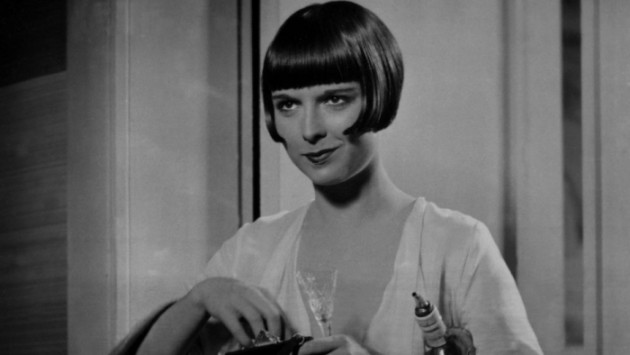
Lousie Brooks
Bogart might have made a public confession to having been duped by the Communists when the true colour of the Committee for the First Amendment came into focus, but he was also a liberal Democrat who had loaned his talents and celebrity status to the 1944 re-election campaign for Franklin Delano Roosevelt. 24 His defence against accusations of Communist association included the insistence that “I went to Washington because I thought fellow Americans were being deprived of their constitutional rights, and for that reason alone.” 25 In a letter that is worded both boldly and carefully, this is a sentence that stands out for showing empathy for the plight of the affected parties, without being sympathetic to the cause they were supporting.
Bogart’s portrayal of Dixon Steele, which Brooks sees as being infused with the actor’s real personality, is buoyed by a similar tone. Here is a character who is falsely accused of a heinous crime, and struggles to vindicate himself against allegations so persistent that even his closest associates begin to have their doubts about his innocence. Steele is presented in such a way that the audience never really knows the truth until his name is cleared by the confession of the actual culprit in the film’s final moments. In a Lonely Place can be seen as a film noir that depicts the tragedy of a doomed romance between a man who is incapable of change and a woman who is too wise to linger in harm’s way, yet it can also be viewed as an allegory about the damning effects of being the target of a witch hunt which projects an aura of guilt over any suspicious behaviour.
The brilliance of the execution here is that, despite establishing Steele’s hardened sense of justice in the film’s early moments, the audience is led to suspect him based solely on anecdotal evidence and the caricature of his character flaws. There is no firm proof supporting the case being made against him. The story he tells the police about the night of the murder, the story that Laurel corroborates, and the story we are privileged enough to witness is that the ill-fated Mildred (Martha Stewart) left home and that’s the last he saw of her. His alibi, which we see for ourselves, is simply not enough to clear his name when so many prying eyes are brought to bear on his personal conduct. Even in the absence of any discernible motive, there is a sense that Steele might have committed the murder simply because he seems to be physically capable of having done so and because he has made use of an imagination honed by years of writing to describe the way in which the murder transpired.
The persecution of Joe Gillis in Sunset Boulevard is a lot more straightforward. He is no murderer, but he is manifestly guilty of being delinquent in his repayment of personal debts. On the whole Gillis lacks the moral fibre that Steele shows, but the motivation for the way that he deceives Norma Desmond is that it places him in a situation where he can remove himself from his dire financial predicament and affords him the ability to work on an inspiring new script with Betty Schaefer (Nancy Olson), a young woman who functions as both collaborator and muse.
There is to be, however, no regaining of former status for Gillis. The industry, in a state of disarray, was boarding up the entrances and closing off all the roads. The traffic on Sunset Boulevard is all one way, and it’s a winding path that descends from the Hollywood sign and dead ends with a swan dive into oblivion. The entire landscape of the film is dotted with examples of those who have been cast out of the inner circle, and banished from the spotlight forever. The plight of Gillis, and screenwriters in general, is part of a vicious circle that sees former luminaries of the picture business reduced to gathering together for card games where they can reminisce about the good old days when they were still famous.
There is no real future for any of these people. Their success set them apart from the real world and now that they’ve served their purpose on the silver screen they find themselves callously discarded. There is simply nowhere to go. These once-valuable commodities are now shunned by a new generation of industry executives, like Junior from In a Lonely Place, who have no memory of services rendered in the past and display a sense of loyalty that only seems to take future profits into consideration. Those unfortunates who have been cast out of the inner folds of the studios have become nomads with no place to call home. They take shelter amongst themselves. Max von Mayerling (Erich von Stroheim), her ex-husband and an industry outcast himself, does his best to shelter Norma Desmond from this harsh reality, but succeeds only in creating the shimmering mirage of a possible return to lush splendour that fuels the visions that lead her to believe she’ll ever escape the desolation of her exile to the outskirts of society.
The fate that greets the writers is no less grim. Joe Gillis, who was willing to do just about anything to keep his head above the surface, finds himself in a watery grave that he has dug for himself. He was unable to see the twist ending to his own story, and was shot in the back by his disgruntled employer Norma Desmond. This murderous act finally gets her the close-up she’s been craving for so long, but it is the flashbulbs and cameras of the media that have come to greet her. Her name, so long forgotten, has had the cobwebs torn away. It’s been cleaned off, but it can’t be polished. It no longer has the glow of fame. That is all in the past. Her image has rusted and tarnished, and been transformed into notoriety. Gillis may be the narrator of the story, but it is her name that will be on the marquee, while he is merely an insignificant footnote. The public doesn’t really concern themselves with the ones they don’t recognize, like Meredith tells Dixon Steele “I used to think that actors made up their own lines.”
Gillis might be have found his way to Sunset Boulevard, but he ultimately winds up in a lonely place. Dixon Steele manages to survive his journey, but he does not emerge unscathed. Like those at the HUAC trials who were confronted by the true meaning of the word informer, 26 Steele discovers that he has been betrayed by those he believed to be closest to him. They didn’t name names, but they turned their backs on him when he most needed their support. They failed to believe in his innocence, and this doubt caused them to break from him. The film ends with his name being cleared, but the bonds that he once shared with those dearest to him have been completely severed; leaving him abandoned to his own isolation. Hoberman says of In a Lonely Place that, “as the title suggests, the movie colony is an environment of smashed careers and free-floating paranoia.” 27 This same sentiment can also be seen to permeate the world of Sunset Boulevard.
Notes
- Hoberman, J. An Army of Phantoms: American Movies and the Making of the Cold War. p. 119. New York, NY : The New Press, 2011. p. 119. Print. ↩
- Naremore, James. More Than Night: Film Noir in its Contexts. pp. 127-128. Berkeley and Los Angeles : University of California Press, 1998. Print. ↩
- “No historian has been able to show exactly what effect the subsequent restructurings, blacklistings, and imprisonments had on American culture, but Thom Andersen has intelligently addressed the important question of whether the most famous victims of the blacklist were talented filmmakers who were responsible for a distinctive kind of cinema. Andersen concludes that during the years between the first HUAC hearings in 1947 and the second in 1951, a group of soon-to-be-blacklisted leftists and their ‘fellow travelers’ – Robert Rossen, Abraham Polonsky, Joseph Losey, Jules Dassin, John Berry, Cyril Endfield, John Garfield, John Huston, and Nicholas Ray – responded to the threat of political repression by creating what amounted to a subgenre.” Naremore, 123-124. ↩
- “It also makes sense to distinguish in a general sense between two major branches in the ‘family tree’ of noir – one tending toward cynicism and misanthropy (Hitchcock and Billy Wilder), and the other toward humanism and political engagement (Welles and Huston). The second branch became especially militant in the years after the war, and we can easily identify its politics and aesthetic strategies.” Naremore, 125.. ↩
- “Shooting throughout the spring of 1949, its production shrouded in secrecy, Sunset Boulevard began previewing months before its scheduled opening to select audiences of Hollywood influentials. According to the legend, after one such screening on the Paramount lot, enraged MGM potentate Louis B. Mayer confronted Wilder, screaming that the Vienna-born filmmaker had disgraced the industry that made and fed him and should be tarred and feathered and run out of Hollywood.” Hoberman, 118. ↩
- Schwartz, Nancy Lynn. The Hollywood Writers’ Wars. p. 108. New York, NY : Knopf, 1982. Print. ↩
- Navasky, Victor S. Naming Names. p. 78. New York, NY : Viking Press, 1980. Print. ↩
- Navasky,183. ↩
- Wertheim, Larry M. “Nedrick Young, et al. v. MPAA, et al.: The Fight Against the Hollywood Blacklist.” in South California Quarterly, Vol. 57, No. 4 (Winter 1975), p. 386. Berkeley, CA : University of California Press. JSTOR. Web. 12 Oct 2013. ↩
- Staiger, Janet. “Individualism Versus Collectivisim: The Shift to Independent Production in the US Film Industry.” in The Classical Hollywood Reader. pp. 335-336. Steve Neale, ed. New York, NY : Routledge, 2012. Print. ↩
- Schwartz, 286. ↩
- “a confidential source told the FBI that Ray (an associate of ‘persons strongly suspected of Communist connections’) would be assigned to I Married a Communist. Ray actually took the job and then quit. Despite this, he would maintain, Howard Hughes protected him. Ray’s source was Robert Mitchum, an RKO contract star busted for marijuana possession in 1948 and sentenced to a two-month stretch in an honor farm. ‘A guy out of the DA’s office had told [Mitchum] in a drunken moment that my office, my house, my car, my everything had been bugged to the teeth, and that Howard Hughes had learned about it and called his executive producer, Sid Rogell, and said he wanted all the bugs and harassment taken off Nick Ray: ‘I don’t want that boy hurt.’” Hoberman, 124 ↩
- Cohan, Steven. Masked Men: Masculinity and the Movies in the Fifties. Bloomington : Indiana University Press, 1997. Print. “Produced by Bogart’s own company, Santana, In a Lonely Place, made the same time as Where the Sidewalk Ends, follows a similar course in its repudiation of the star’s 1940s tough-guy persona. Screenwriter Dixon Steele (Bogart) has failed to adjust to postwar life.” p. 97. ↩
- Sussman, Warren. “Did Success Spoil the United States: Dual Representations in Postwar America.” in Recasting America: Culture and Politics in the Age of Cold War. p. 24. Larry May, ed. Chicago : University of Chicago Press, 1989. Print. ↩
- “Working from and substantially changing Dorothy B. Hughes’s crime novel, Ray emphasized the Hollywood atmosphere and used the movie as a means to critique the star’s tough guy persona.” Hoberman, 124. ↩
- When the Hollywood Nineteen returned from Washington, the Ten with the Nine who did not get called, there was a second meeting at the Gershwins’, and it was like the middle of a flu epidemic. Bogart was furious. He was shouting at Danny Kaye, ‘You fuckers sold me out,’ and he left.” Schwartz, 281 ↩
- Navinsky, 153. ↩
- Narmeore, 130. ↩
- Navasky, 153. ↩
- Naremore, 130. ↩
- Navasky, 80. ↩
- Brooks, Louise. Lulu in Hollywood. New York : Alfred A. Knopf, 1982. Print. “When the coming of talkies made the cutting of actors’ salaries practicable and I was the only one on the Paramount lot who refused to take a cut, thereby losing my contract, I doubted whether such ‘independent’ decisions would lengthen my career. When I was the only one of the cast who refused to return to make the talkie version of The Canary Murder Case, my last silent film there, the studio doused me with ugly publicity and made my doubts a certainty. I was blacklisted. No major studio would hire me to make a film.” p. 58 ↩
- Brooks, Louise. Lulu in Hollywood. p. 62-63. New York : Alfred A. Knopf, 1982. Print. ↩
- Schwartz, 215. ↩
- Navasky, 153. ↩
- “Although it may not do as a technical definition, for present purposes – and in accordance with what I understand to be popular usage – I define an informer as someone who betrays a comrade, ie: a fellow member of a movement, a colleague, or a friend, to the authorities. Given this definition, and taking the objections of guilty-by-connotation into account, I think it is useful, when context permits, to call those who named names by their rightful name – informer.” Navasky, xviii. ↩
- Hoberman, 125. ↩



